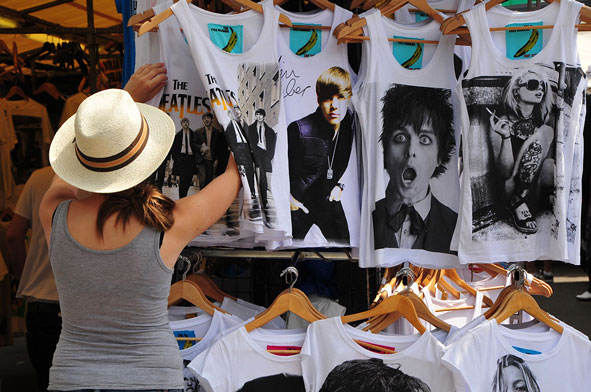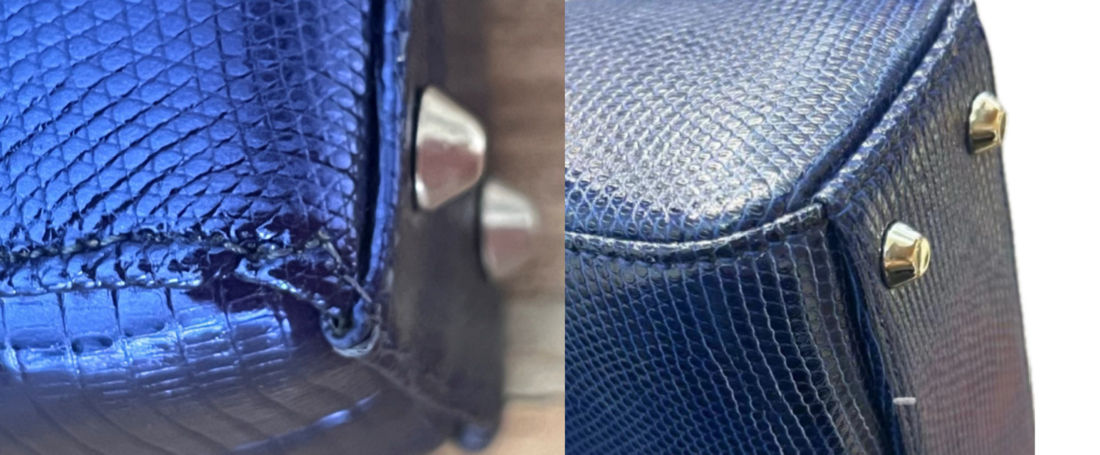Counterfeiting
You are looking for a specific pair of shoes of your favourite brand. On the official brand’s website, these shoes are above your budget. By surfing online, you find the same pair of shoes for much less than the price on the official website. You order and pay for your purchase but upon delivery, you are disappointed. The shoes have poor finishing with rough stitches. Despite your reminders, the seller is no longer responding. You may have purchased a counterfeit item.

Description of counterfeiting
Counterfeiting is the act of reproducing or imitating a branded product without authorisation. Beyond luxury goods, this phenomenon also affects all consumer products.
Examples: clothing, perfumes, watches, personal electronics and household appliances, car parts, food products, toys, and even medicines.
Counterfeit medicines
You buy a prescription medicine on a site that does not require a prescription from you?
Be aware that they might be selling falsified medicine, containing too much, too little or no active ingredient or even harmful ingredients. A common, EU-wide logo allows the identification of legal online pharmacies.
More information on the website of the European Medicines Agency.
Your order is blocked at customs?
You buy on a site presented as European but your order is blocked in customs. Products from a non-EU country over 150€ are effectively subject to customs duties. Additional costs are then asked for, which do not guarantee the delivery of the articles, which are often the result of counterfeiting.
Advice:
- Do not pay the extra charges
- Request in writing the cancellation of the order and the refund of the sums paid to the seller
How can you spot counterfeit goods online?
To limit the risk of falling into the trap and buying counterfeit goods, be wary when:
The sales website is unusual
When abroad, avoid buying from street vendors who sell branded products without displaying the brand’s name.
On the Internet, make sure that the website is trustworthy before placing an order. Look for reviews about the seller and find out about the products they sell. Check that the product actually exists under the brand’s name.
The seller is incorrectly identified
A trustworthy seller must clearly indicate their name and full contact details on their website.
You can also check who registered the website and from which country. Use the following tools: WHOIS, DENIC (for .de domain names), AFNIC (for .fr domain names).
Take a look at the website's legal notice and terms and conditions of sale. The website must clearly state the payment methods, delivery period, right of withdrawal and legal guarantee of conformity.
The price is unusually low
Compare prices with the brand's official shop. Be wary of prices that are too low or that mention a significant discount.
If you buy in-store, make sure you get a receipt.
Pay attention to the payment methods offered. Avoid transferring cash by money order or postal order. These payments methods offer no guarantee.
The brand does not authorise this retailer
Compare the brand logo with the one displayed on the website.
Check with the brand to see if this website is on the list of authorised retailers. Report any undesirable retailers to them.
Certain luxury goods, highly specialised or high-tech products are sold exclusively through a limited distribution network. These cannot be legally sold as new on a third-party website. Products sold under these conditions are therefore necessarily counterfeit, regardless of the website's claims.
What to do if you bought a counterfeit product?
The product doesn’t seem to be authentic
Once you receive the item, compare it with the photos on the retailer's website, as well as those of the brand. Does it match? Pay attention to the quality: the symmetry of the lines, the stitching, the strength of the fabric, and the materials used.
Some products (household appliance, toy, medicine, etc.) should come with instructions for use. The absence of instructions, spelling mistakes or inaccurate translations should alert you.
Furthermore, certain products must bear the CE mark to prove that they comply with European standards. Make sure that the CE mark is clearly displayed on the product.
Finally, packaging is also a tell-tale sign. A luxury item is unlikely to arrive wrapped in a plastic bag.

You realise afterwards that the item you have purchased is counterfeit. Despite the sanctions you may face, here are your options if you are a victim of counterfeiting.
Taking action against the seller
You may either:
- request a refund from the seller on the grounds of deception,
- or exercise your right of withdrawal.
However, if the seller is deliberately selling counterfeit goods, it is unlikely that they will cooperate.
Give an online review
Your review published on the seller's website or another online platform will potentially alert other consumers.
File a complaint
- File a complaint to the police or gendarmerie.
- Contact your local customs or fraud prevention services.
Report counterfeiting
- Report your incident to the brand: as the holder of the rights and patents, it will be able to take action against the fraudulent website.
- Report it on the platform for reporting illegal content on the Internet: PHAROS.
How to act against an online platform or classified ad website?
Taking action is even more complicated in the case of purchases made via a platform that connects sellers and buyers. Such sites are third parties to the contract, which binds you solely to the seller. You cannot therefore hold them liable.
The only possibility is to prove that the platform was aware of the sale of counterfeit goods and did nothing to prevent it. This means that you must be able to provide evidence of previous reports, etc. So be vigilant when buying products from a private or professional seller via an intermediary platform.
Thanks to the Digital Services Act, European online platforms or those targeting European consumers have certain obligations.
If a platform becomes aware of the sale of an illegal product or service, it must inform users who have purchased it. It must also provide the identity of the seller or service provider and the options for redress.
Our advice
- Before proceeding with a second-hand purchase of a luxury good, ask the seller to send you the original invoice for the product. This will give you proof of the original purchase.
- Contact the brand or an authorised retailer to request authentication of the product. Avoid websites that offer to authenticate luxury items within a few hours based on simple photographs.
- If you have any doubts about the authenticity of the product, report it immediately to the platform, explaining your reasons. Under the Digital Services Act, all platforms must have a reporting system for counterfeit products. Depending on its terms and conditions of sale, the platform may offer you a refund.
Sanctions in Europe
All EU countries prohibit the possession of counterfeit goods. If you have purchased a counterfeit item in a neighbouring country and are subject to customs inspection, be careful!
Crossing an EU border in possession of counterfeit goods, whether purchased knowingly or unknowingly, exposes you to penalties. These penalties depend on the national regulations of the country where the offence was committed. In France, this offence is punishable by a fine or even imprisonment.
Good to know
Despite free movement within Europe, mobile customs officers regularly patrol border areas. They may also carry out regular checks at ports and airports. In the event of a check, it is the traveller's responsibility to prove the legal origin of the goods they are carrying.
What do you risk if you keep a counterfeit item?
Beyond potential penalties, counterfeiting poses risks. Products are often of poor quality or even dangerous because they do not meet European standards. For example, counterfeit medicine or cosmetics can pose a health risk because the active ingredients are incorrectly dosed. Counterfeit toys do not comply with standards designed to ensure the safety of children who use them.
If you realise after purchase that it is a counterfeit, it is best not to use it.
Funded by the European Union. Views and opinions expressed are however those of the author(s) only and do not necessarily reflect those of the European Union or the European Innovation Council and Small and Medium-sized Enterprises Executive Agency (EISMEA). Neither the European Union nor the granting authority can be held responsible for them.

